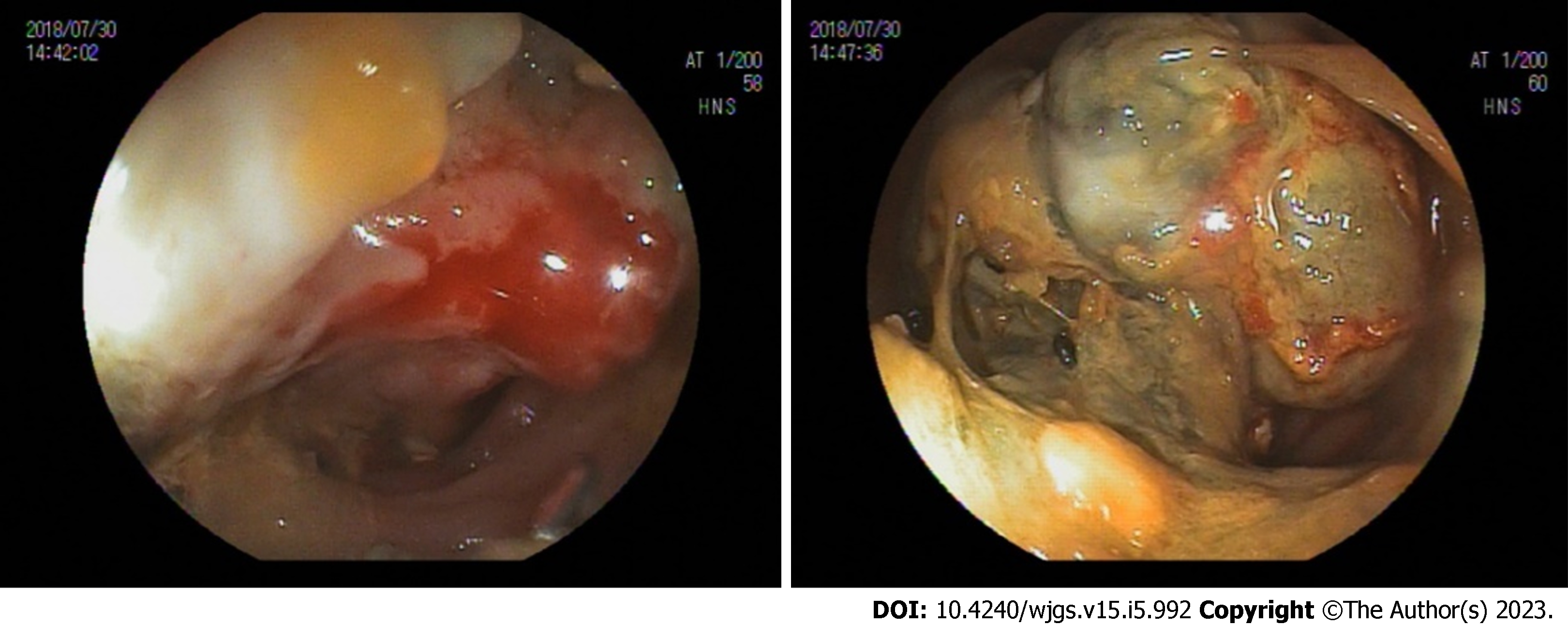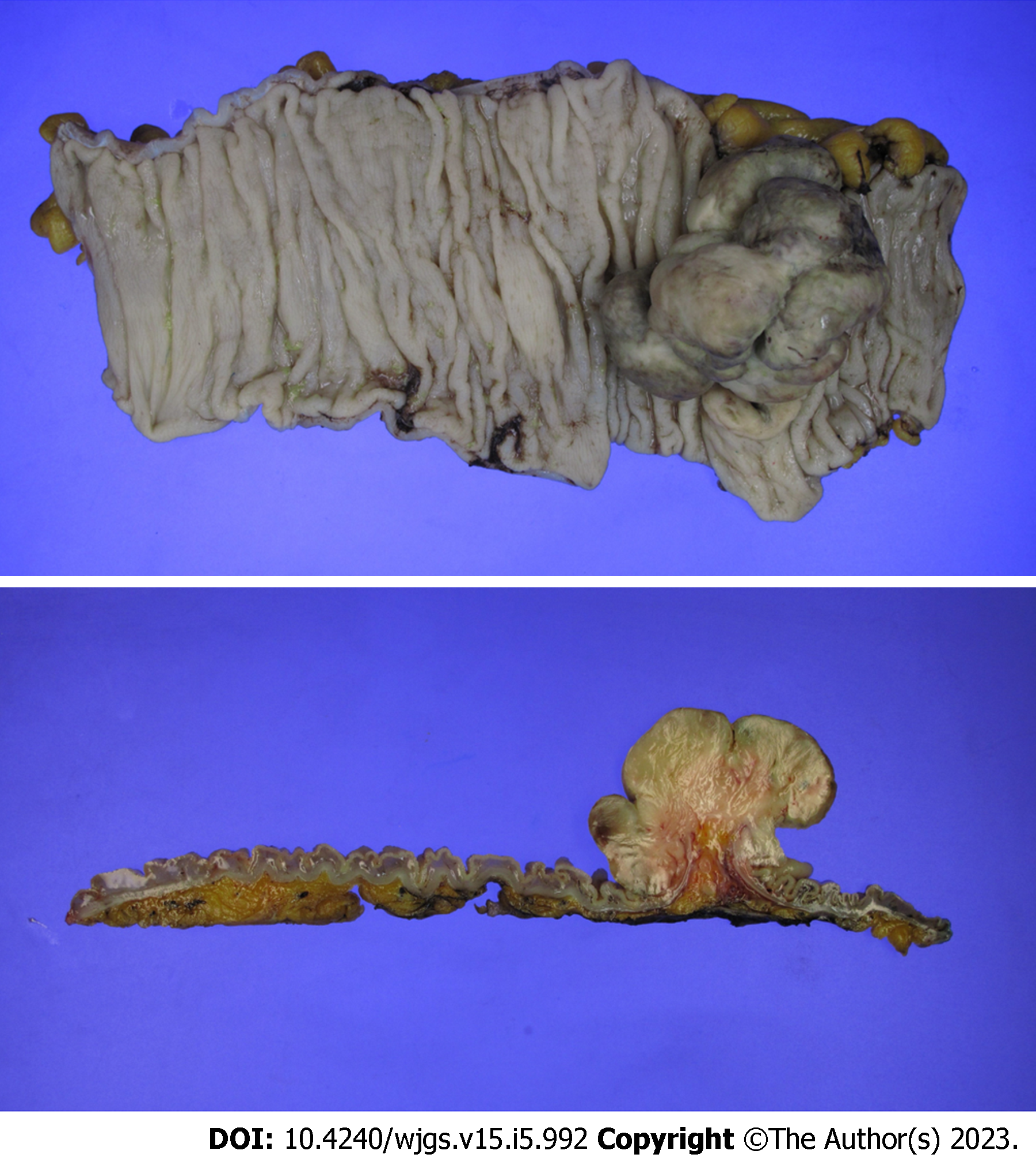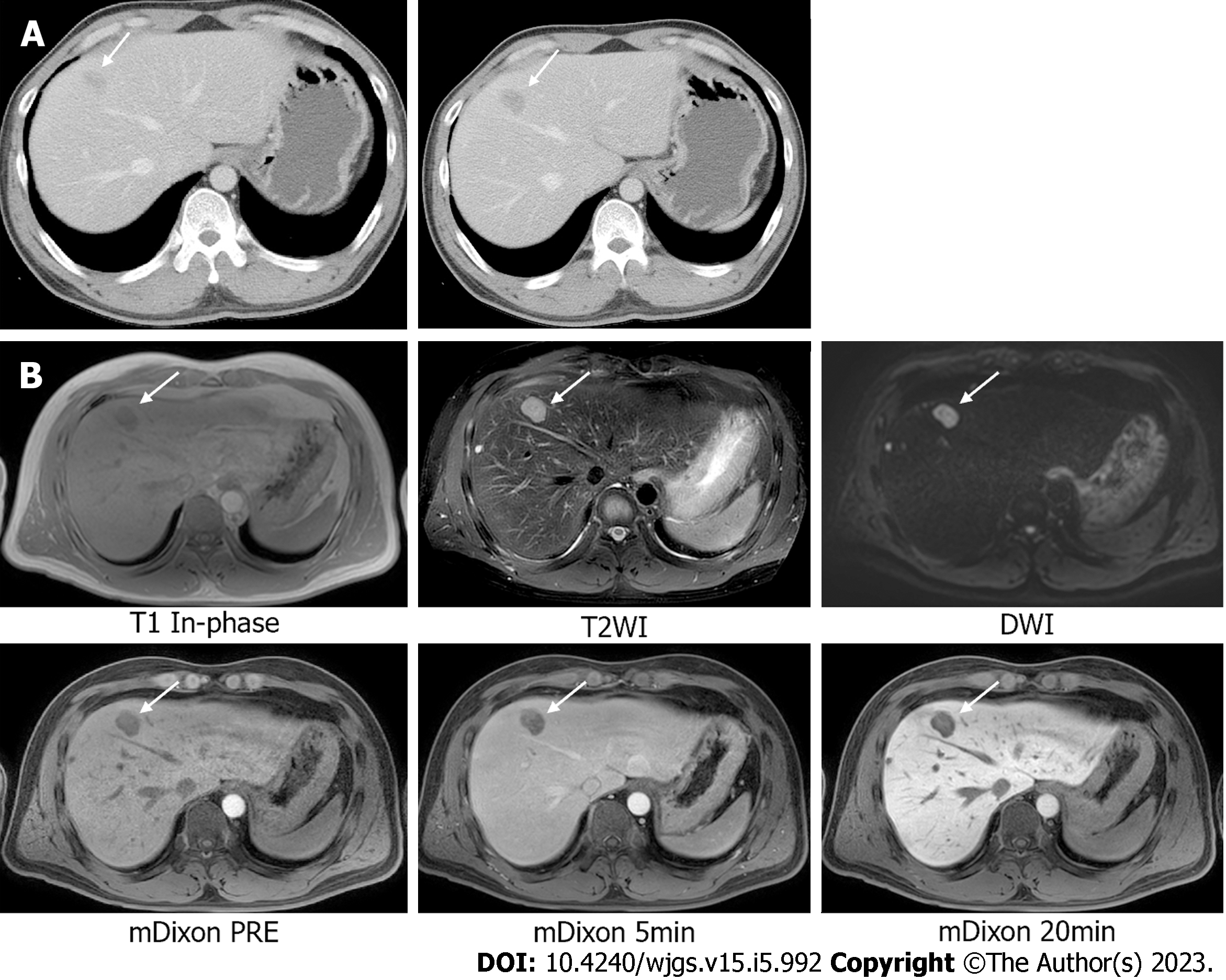Copyright
©The Author(s) 2023.
World J Gastrointest Surg. May 27, 2023; 15(5): 992-999
Published online May 27, 2023. doi: 10.4240/wjgs.v15.i5.992
Published online May 27, 2023. doi: 10.4240/wjgs.v15.i5.992
Figure 1
Endoscopic findings of large polypoidal mass in the descending colon.
Figure 2 Contrast-enhanced abdominal computed tomography.
Computed tomography shows the lead point (white arrow) of the intussusception in the descending colon due to an approximately 3-cm cystic mass. A: Axial view; B: Coronal view.
Figure 3 Gross pathological specimen after the left hemicolectomy.
A 7.5 cm-sized leiomyosarcoma originating from the descending colon was identified.
Figure 4 Abdominopelvic computed tomography and liver dynamic magnetic resonance imaging.
A: Abdominopelvic computed tomography performed 11 mo after left hemicolectomy reveals a new low-density mass, with possible liver metastasis in segments 4 and 8. There is no evidence of local tumor recurrence at the anastomotic site; B: Liver dynamic magnetic resonance imaging reveals a 2.3-cm solid mass with peripheral enhancement and diffusion restriction in segments 4 and 8 of the liver.
Figure 5 Intraoperative finding, gross finding, and pathological specimen.
A: Intraoperative finding. After demarcating the tumor location and resection margin using intraoperative ultrasonography, liver segmentectomy of segment 8 was performed; B and C: Gross finding of the resected liver (B) and pathological specimen (C). The resected specimen exhibits a 2.4 cm × 2.2 cm × 2.0 cm white-yellowish solitary mass that is firm and relatively well-demarcated.
- Citation: Lee SH, Bae SH, Lee SC, Ahn TS, Kim Z, Jung HI. Curative resection of leiomyosarcoma of the descending colon with metachronous liver metastasis: A case report. World J Gastrointest Surg 2023; 15(5): 992-999
- URL: https://www.wjgnet.com/1948-9366/full/v15/i5/992.htm
- DOI: https://dx.doi.org/10.4240/wjgs.v15.i5.992













